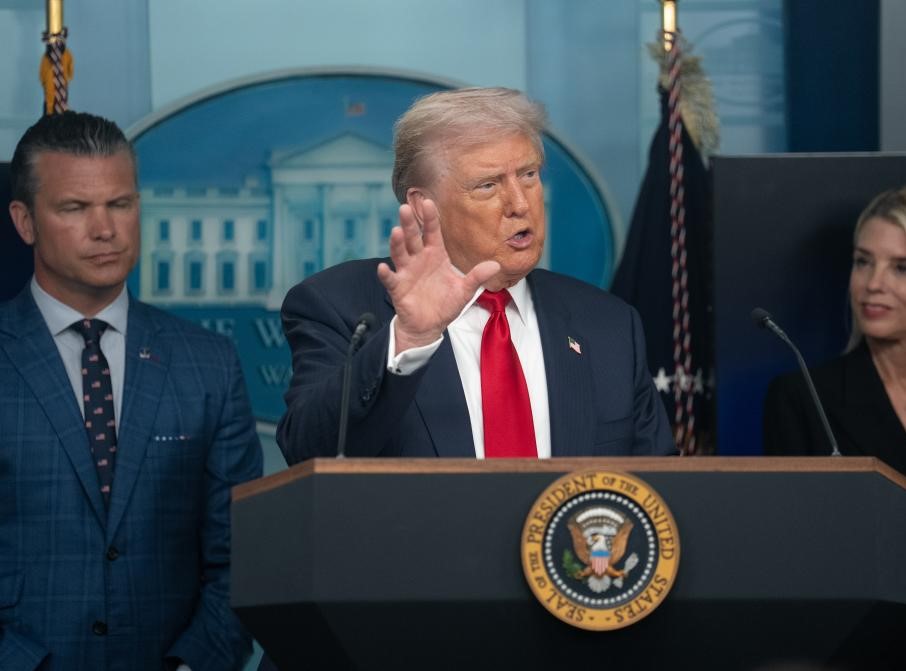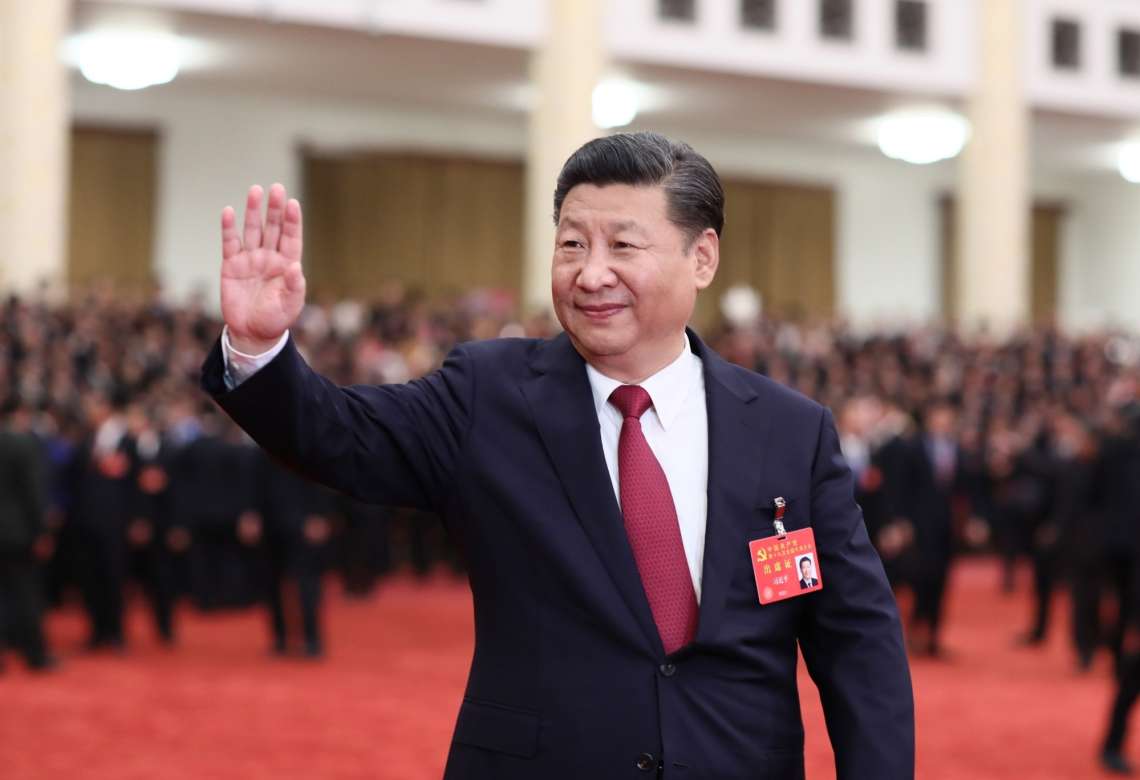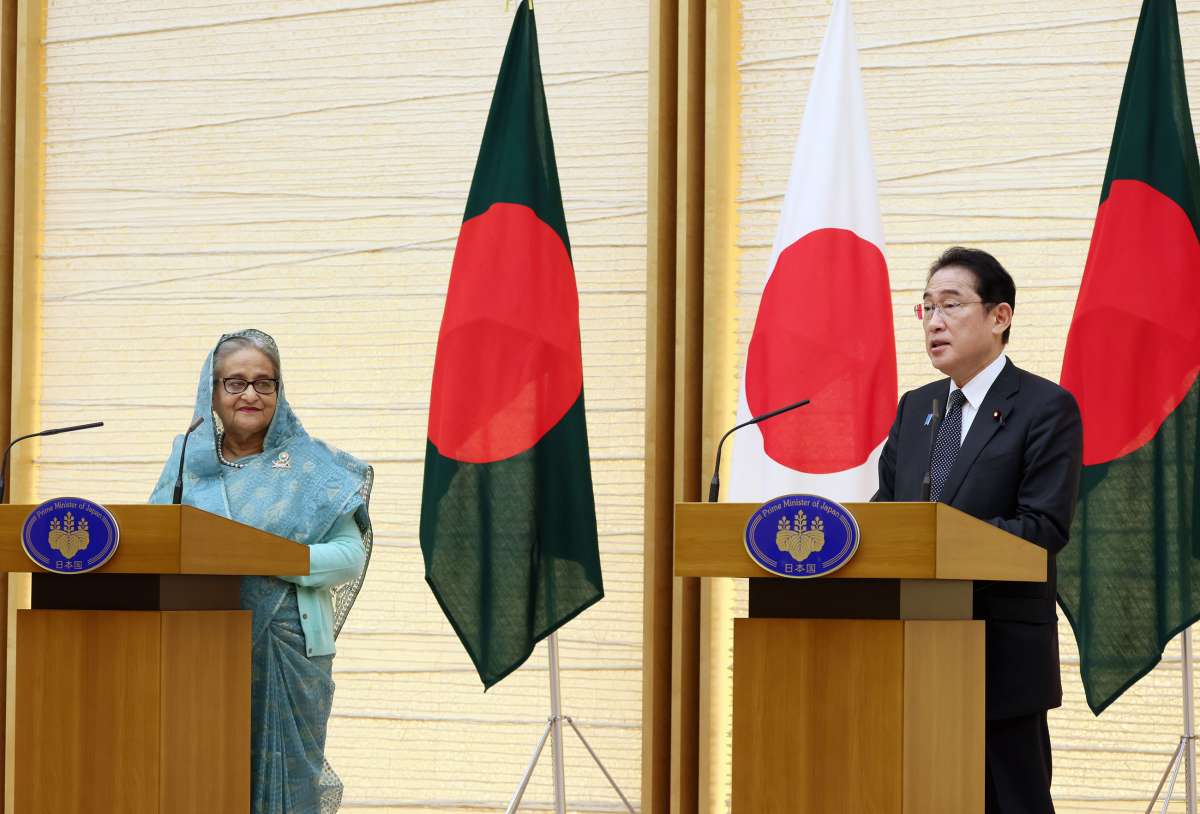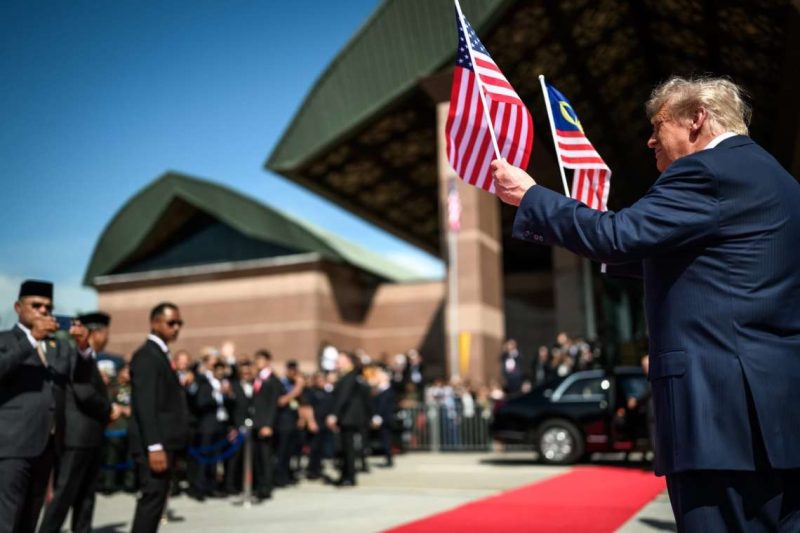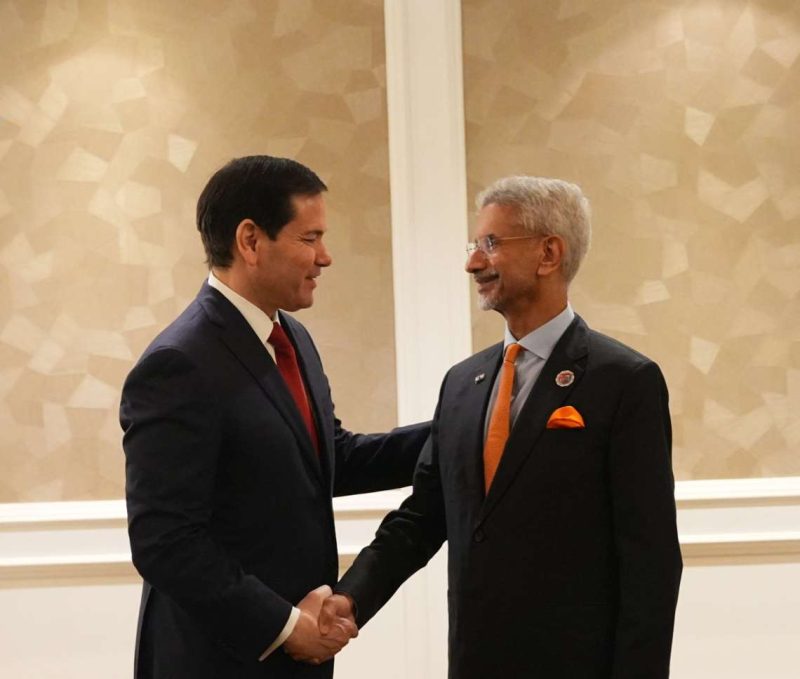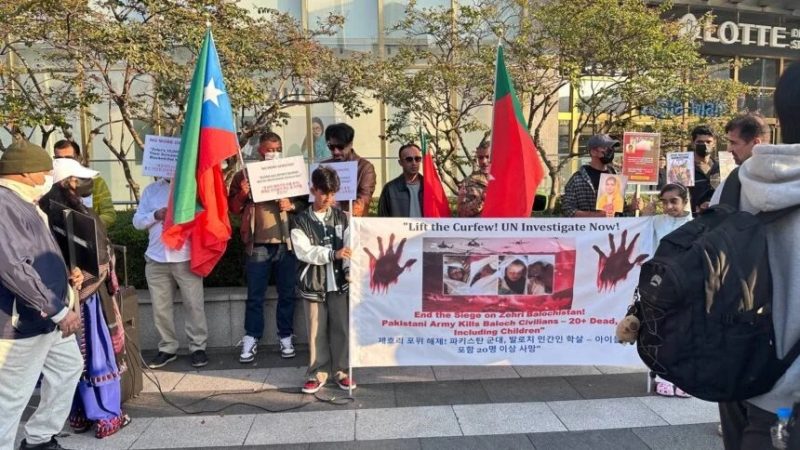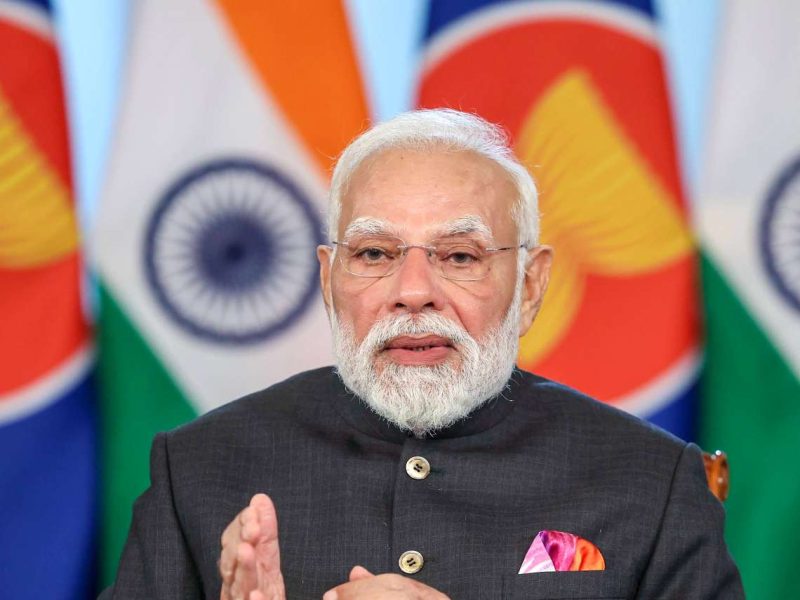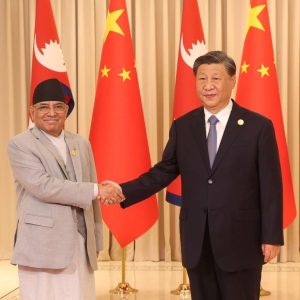Salami slicing and grey-zone tactics are China’s regular modus operandi, but its actions are becoming ever more robust and blatant as China narrows Taiwan’s room for manoeuvre and psychologically bludgeons it…reports Asian Lite News
In response to Taiwanese President Tsai Ing-wen’s stopover in California and meeting with US House Speaker Kevin McCarthy on 5 April, China upped the ante with a series of military aircraft manoeuvres designed to psychologically intimidate Taiwan.
Beijing’s response to the meeting was muted at first, promising “joint inspection patrols” by a Maritime Safety Administration vessel. This was followed by two live-fire exercises off the coast of Pingtan and Fuzhou. As the People’s Liberation Army (PLA) ramped up pressure against Taiwan, the Eastern Theater Command announced a large-scale exercise from April 8-10.
On the first day, a large number of aircraft – including H-6K strategic bombers and a Y-20U tanker – crossed the Taiwan Strait median line and entered Taiwan’s air defence identification zone (ADIZ) in the southwest.
The next day, J-15 fighters from the Shandong aircraft carrier entered Taiwan’s ADIZ for the first time ever. KJ-200 airborne early-warning aircraft entered for the first time too. In fact, 259 PLA aircraft provocatively entered Taiwan’s ADIZ in the month of April.
This was an increase of 184 compared to April last year, and it was actually the second-highest total ever (the highest being 446 aircraft in August 2022, the same month that Nancy Pelosi visited Taipei). The highest single-day total of aircraft violations was 10 April with 54 aircraft.
Significantly, this was the second-highest daily figure ever. Most aircraft were fighters (the most common was the J-10), but 20 different types of PLA airframes joined April’s violations.
China has already established a pattern of tightening the screws whenever it views a Taiwanese action with displeasure. It has a range of instruments at its disposal, but military coercion seems to be becoming far more prominent.
Salami slicing and grey-zone tactics are China’s regular modus operandi, but its actions are becoming ever more robust and blatant as China narrows Taiwan’s room for manoeuvre and psychologically bludgeons it.
There are more overt measures in its toolkit that China has not yet taken. Seizing outlying islands such as the Pratas would enable China to extend control over territory held by Taiwan.
Yet this would be a higher risk than what China did in the South China Sea when it militarized unoccupied low-lying reefs and turned them into bases. Other potential actions include cyberattacks and targeting civilian infrastructure.

Far more violent would be missile bombardments or maritime, air and information blockades. Beijing could use them to force Taiwanese leaders to the negotiating table, or to set conditions for a military invasion. The ultimate military option for China would be a full-scale amphibious invasion.
However, there are only a few beaches in Taiwan where such landings are possible, and only certain times of the year when the waters of the Taiwan Strait are sufficiently calm.
The best bet for Taiwan is therefore to try and control access to the air and water around Taiwan to keep Chinese troops at arm’s length. Contrary to Russia’s overland invasion of Ukraine, Taiwan would rely upon air and sea denial using anti-ship missiles and naval mines, whereas Kyiv relied on tanks and artillery to repel Russia’s ground invasion.
After watching the conflict play out in Ukraine, Taiwan will prioritize equipment like coastal defence missiles, drones, electronic jammers, missile-equipped boats, loitering munitions, communication satellites and mine-laying ships.
These all contribute to a “porcupine strategy”, the idea being to sharpen Taiwan’s quills to make it more painful and costly for China to eat the porcupine.
Taiwan will also have learned the importance of stockpiling munitions, increasing resilience, self-sufficiency, keeping supply and communications lines open, and the effectiveness of asymmetric warfare. There is a greater sense of urgency in Taiwan’s establishment, and it knows it must better defend itself.
If it did invade, China would hope for resistance to collapse, but Ukraine has proven that citizens defending their homeland can fight ferociously.
The PLA has not been tested in combat since its short-lived 1979 invasion of Vietnam, plus a full-scale amphibious invasion is the most complex kind of military operation conceivable.
The question is – how long is Chairman Xi Jinping willing to wait for the unification of Taiwan and China? Note that, although China uses the term “reunification”, this is extremely inaccurate given that Taiwan has never been part of communist China.
Late last year, the Center for Strategic and International Studies (CSIS) in the USA surveyed 64 recognized experts on China-Taiwan relations, including former high-level US government officials, US government policy and intelligence analysts, and academics.
These experts offered their thoughts on how China-Taiwan unification or conflict might play out. Only 20 per cent believed China has a coherent strategy for peacefully unifying Taiwan, leaving 80 per cent who think China does not have “a coherent internal strategy and roadmap, with concrete stages and actionable next steps”.
After Taiwanese citizens watched the suppression of Hong Kong under national security laws and iron-fisted communist tactics, it is no surprise that they are opposed to unification with China. Because Xi failed to win hearts and minds in Taiwan, coercion is pretty much the key tool left in the communist toolbox.
About 84 per cent of respondents in the CSIS survey believe China is willing to wait for unification, but not forever, and just 6 per cent thought China would willingly accept the status quo.

Concerning timelines for unification, fewer than half (44 per cent) think Beijing has a hard internal deadline to unify Taiwan by 2049, which is China’s target date for national rejuvenation as it marks the 100th anniversary of communist China.
A majority (80 per cent) do not think that spikes in PLA military exercises in response to Taiwanese activities represent an acceleration of preparations for war.
Next, 79 per cent believe Xi will prioritize making progress towards Taiwan’s peaceful unification during his third leadership term, which commenced last October.
There has been a lot of speculation that 2027 represents the time when China might use force against Taiwan (this is when Xi’s third term ends, plus it is the centennial of the PLA’s founding).
Xi has stated the Taiwan issue should not be passed down from generation to generation, reaffirming his desire to seek a decisive resolution, though he has been careful not to hint at dates.
Indeed, there is a broad consensus by CSIS interviewees – some 83 per cent – that China does not plan to use military force by 2027.
Nonetheless, 79 per cent of respondents think Xi will move beyond passive deterrence and become even more coercive and active in his efforts to browbeat Taiwan. Some 63 per cent expect a PLA amphibious invasion of Taiwan is possible within the next decade.
Although such an invasion is possible, 27 per cent see it as unlikely and just 8 per cent as likely. Instead, limited use of force and an unintended military accident are more likely.
Actually, the experts surveyed by CSIS were much more willing to believe that China would deliberately escalate its use of force short of invasion in the next decade.
One example of such measures could be a blockade, where 30 per cent see this as likely, 22 per cent as very likely and 44 per cent as possible. Just 5 per cent think it will be not at all likely.
If Taiwan declared independence, 77 per cent predict that China would immediately invade Taiwan. Incidentally, 100 per cent thought the USA would deploy forces to defend Taiwan from a Chinese invasion in case of an unprovoked attack.
However, there was a divergence of opinion on how far the USA would go. About 30 per cent think the US would deploy troops but would not be willing to bear significant losses.
Just 5 per cent thought the USA would be willing to bear any cost, which would be encouraging news to Xi.
Some 55 per cent of the experts assessed that Beijing believes the USA still has a military advantage over China, and just 2 per cent said the USA could not repel an invasion.
Beijing could potentially brandish nuclear weapons as a threat to deter intervention by the USA, as this certainly worked well for Russia in the Ukraine conflict.
These were the views of experts in their fields, but none were actually based in Taiwan. One American defence analyst who has lived long-term in Taiwan shared the opinion that the results of Taiwan’s next election in 2024 will be critical.
The incumbent Democratic Progressive Party (DPP), which has a very rocky relationship with Beijing, will be taken on by the more China-friendly Kuomintang Party.
The analyst warned, “If the DPP wins again in 2024, along with a strong legislature, this will be the end of any chance for a peaceful resolution.”
The analyst offered a basic timeline of what he then expected. From 16 August till 14 September 2023 (these dates correspond to the Ghost Festival, the seventh month in the Chinese calendar), he predicted a big Chinese military exercise as China seeks to sway Taiwanese voters.
China will be exerting immense pressure and extensive propaganda to influence the election, using every means at its disposal.
According to the American independent analyst’s predictions, different scenarios are possible depending on the voting results. If the DPP wins, a huge military exercise could occur around 4/5 April, the time of the Qingming tomb-sweeping festival.
The following Ghost Festival (15 July till 18 August 2024) could see China taking military action to secure the sea and air around Taiwan. This could even include missile strikes airbases, naval facilities and radar/communications hubs, as he painted a bleak picture.
The analyst continued that, by Qingming on 4/5 April 2024: “If Taiwan has not surrendered after six months of an air and sea blockade, then a ground invasion with a minimum of 250,000 troops. With summer months coming, occupation forces should operate significantly better on the island than the winter months.”
He continued: “This is purely speculation…but I think it is a safe timeline. Some in Washington DC point to 2026, but President Xi Jinping is not getting any younger. His legacy demands taking Taiwan to become known as the father of modern China (replacing Mao Zedong’s portrait at Tiananmen Square).”
Of course, this is just one person’s prediction of Chinese aggression against Taiwan, but it illustrates the uncertainty and insecurity that China has engendered in this part of Asia.
Taiwan and the USA are now walking a fine line. They need to reassure Xi that his red line of no Taiwanese independence will not be crossed, but they also need to convince the Chinese strongman that aggression will come with unacceptable risks. Thus, the ultimate aim is not to solve the Taiwan issue once and for all, but simply to defer it. (ANI)




